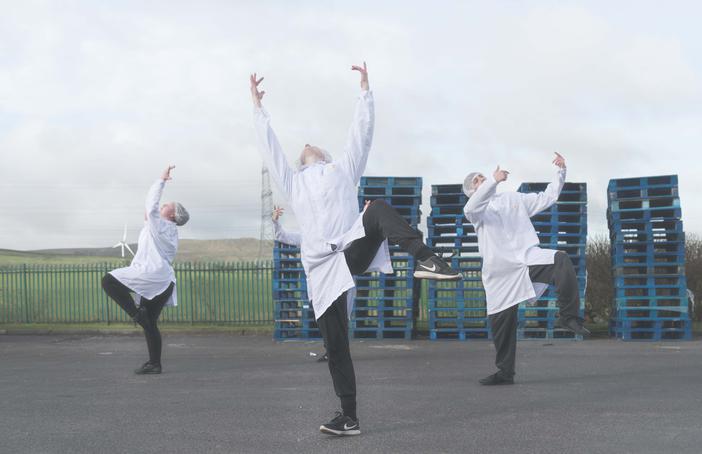Blog Post
Harnessing the heritage of making in our industrial past for a creative and confident future
In a guest blog to mark the first National Festival of Making, designer Wayne Hemingway writes about making creativity a way of life in a post-industrial UK

I was born in Morecambe, but my formative years were spent in Blackburn in Lancashire and making was part of everyday life. Pop made my favourite toys and Mum and Nan were always at their sewing machines. I remember my Step Dad bringing home plastic fabric seconds from the factory he worked in, ICI plastics in Blackburn, and my Mum making bath and door panels with these offcuts.
Textiles and manufacturing are very much part of Blackburn’s DNA and with a town motto of “Arte et Labore” (By Skill and Hard Work), making is written through its people like a stick of rock. Today, 25% of Blackburn’s working population is engaged in making and manufacturing, a figure that is more than twice the national average. It therefore seemed only fitting to launch the first National Festival of Making (6 and 7 May) in the producing heartland that is Blackburn.
But not everywhere is like Blackburn. In the past few decades large-scale manufacturing in the UK has declined, and our post-industrial towns and cities are now some of the most deprived and challenged areas of the country.
Considering the ethos behind Creative People and Places (CPP), it’s no coincidence that many of its 21 projects are based in post-industrial areas of the country - places like St Helens, the Black Country, Sunderland and Pennine Lancashire. But what has happened to these places that were previously defined by large-scale manufacturing and making? How have their identities changed and what role – if any - does creativity play today?
To some it might seem misguided to use creativity as a tool for social change. But when we really think hard about the history and current challenges of these post-industrial places, it’s absolutely the right approach. Each CPP project is taking what’s at the very core of a place – creativity and making – and is bringing together local people and artists to create art experiences that are relevant and connected to their lives and the places where they live. And it’s these art experiences – and the process of coming together to create and shape them - that are helping to redefine the identities of these places, create opportunities and make genuine social changes.
Super Slow Way, for example, is based in Pennine Lancashire. The area is shaped by textiles, which are woven through their social and urban fabric, and by the end of the 19th century it was producing 85% of the world's cotton goods. Drawing on this rich heritage ‘Fabrications’ will launch in September as the UK's first festival that celebrates and explores textiles and the textile industry through the eyes of artists. A partner in The National Festival of Making, we and Super Slow Way commissioned nine artists to take up residence with local manufacturers and create art in collaboration with employees, each inspired by the manufacturers’ histories, making processes, materials and the lives of the workers themselves, in a groundbreaking project called ‘Art of Manufacturing’. The results have proved to be inspiring for everyone involved.
Not too far away, sandwiched between Liverpool and Manchester, St Helens also has a strong history of innovation - for instance in glassmaking and pharmaceuticals - but today is better known for its statistics that highlight deprivation and poverty; a far cry from the heights of its industrial past.
Heart of Glass is already making great changes to St Helens. Thanks to this CPP project there has been a dramatic re-engagement of arts and culture in the civic life of the town – and to such an extent that the local council is now using arts and culture to help inform its vision for the borough. We can see similar things happening in Sunderland, its past as the ‘Greatest Shipbuilding Town in the World’ sadly far behind it, where The Cultural Spring's ‘Inventors!’ project has been launched to help the population rediscover its past for ingenious innovation as a route to mapping its future.
There is a renewed buzz and enthusiasm for creativity and making across the UK. In a lot of areas where Creative People and Places projects are based, making and creativity are in the very DNA of the place and its people, linked to their industrial past. It’s vital we support people in these places to harness that creativity and make it part of a new, confident, national identity. It is time to celebrate this renaissance and inspire new generations to consider creativity as a way of life, ambitions which both CPP and The National Festival of Making share.
Wayne Hemingway
The first National Festival of Making will take place in Blackburn, Lancashire on 6 and 7 May www.festivalofmaking.co.uk







